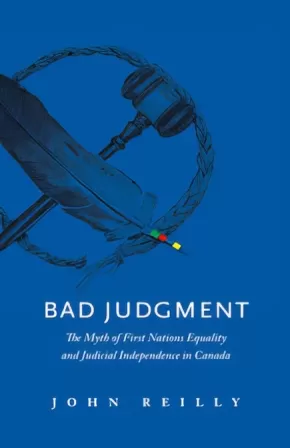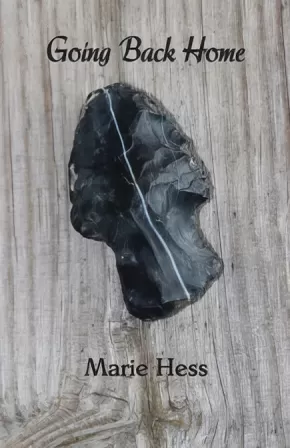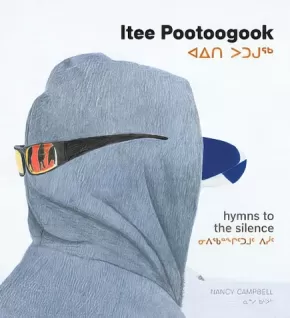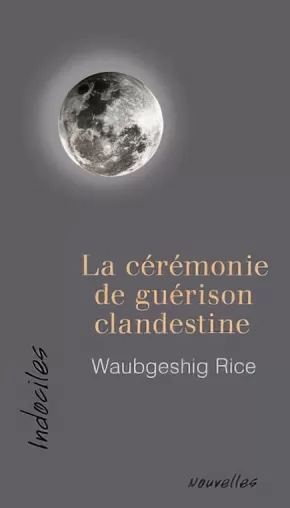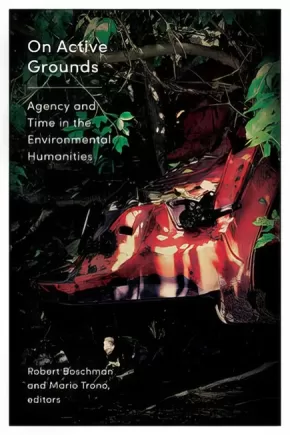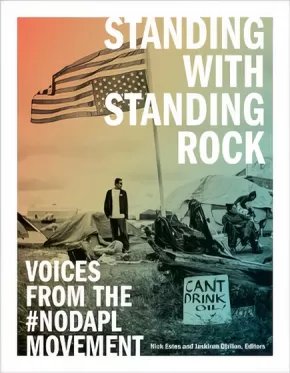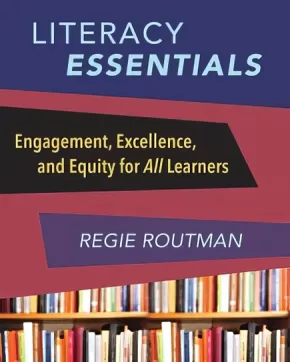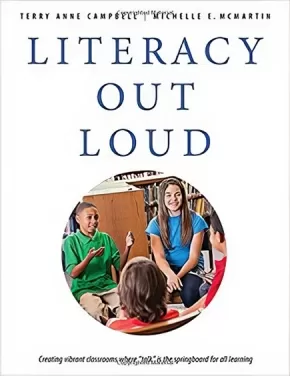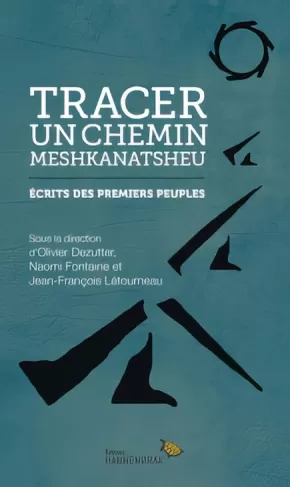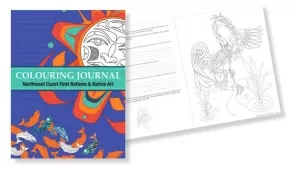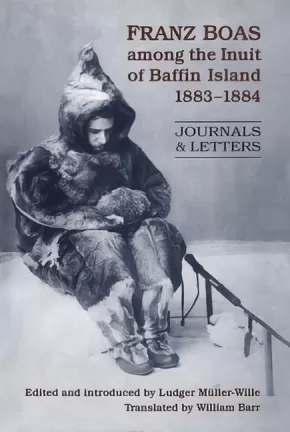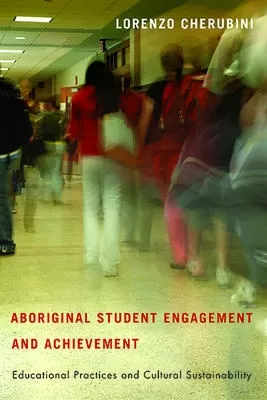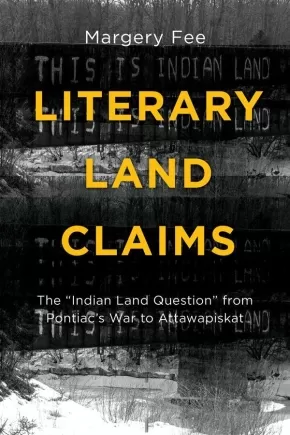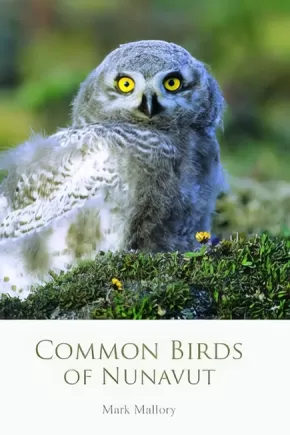
ON SALE
16
-
30
of
86 Results;
Sort By
Go To
of 6
Sales apply to IN-STOCK books only - quantities are provided in the book's title when possible.
Bad Judgment: The Myths of First Nations Equality and Judicial Independence in Canada (1 in Stock) - On Sale!
$17.50 $25.00
Format:
Paperback
Text Content Territories:
Indigenous Canadian; First Nations;
ISBN / Barcode: 9781771601962
Synopsis:
Synopsis:
Judge John Reilly, now retired, was the youngest judge ever appointed to the Provincial Court of Alberta. For most of his 33 years on the bench he was the circuit judge for the Stoney Indian Reserve at Morley, Alberta.
During his career he became interested in aboriginal justice and saw the failure of the “white” legal system to do justice for aboriginal people, the harm caused to them by Canadian colonialism, and the failure of all levels of government, including tribal government, to alleviate their suffering and deal with the conflicting natures of European-style law and Indigenous tradition and circumstance.
As a result of these realizations, Judge Reilly vowed to improve the delivery of justice to the aboriginal people in his community and used his perceived power as a jurist to make changes to improve the lives of the people in his jurisdiction. Along the way, he came into direct conflict with Canadian judicial administration and various questionable leaders among the echelons of both Canadian and First Nation governments.
John Reilly’s first book, Bad Medicine: A Judge’s Struggle for Justice in a First Nations Community, was a Canadian bestseller that sparked controversy and elicited praise nationwide for his honest portrayal of First Nations tribal corruption. Bad Judgment details Reilly’s battle with the Canadian justice system and the difficulties he faced trying to adapt Eurocentric Canadian law for the benefit of First Nations people across the country.
Going Back Home (5 in stock) - ON SALE
$15.96 $19.95
Format:
Paperback
Text Content Territories:
Indigenous Canadian; First Nations; Haudenosaunee (Iroquois); Kanyen'keha:ka (Mohawk);
Grade Levels: University/College;
ISBN / Barcode: 9781772310894
Synopsis:
Synopsis:
Written by a Mohawk Institute Residential School survivor, this is a fierce and candid story that reveals the heartbreaking trauma of that tragic time in our history. The author portrays how the ongoing impact of the residential schools confinements has affected Indigenous communities over several generations and has contributed to many social problems that continue to exist today. By exploring that devastating history, the author finds and celebrates the resilient and hopeful spirit that many residential school survivors, like herself, have managed to retain in the face of horror and torment.
Additional Information
160 pages | 5.50" x 8.50"
Itee Pootoogook: Hymns to the Silence- ON SALE
$22.50 $45.00
Artists:
Format:
Hardcover
Text Content Territories:
Indigenous Canadian; Inuit;
Grade Levels: University/College;
ISBN / Barcode: 9781773101392
Synopsis:
Synopsis:
Itee Pootoogook belonged to a new generation of Inuit artists who are transforming and reshaping the creative traditions that were successfully pioneered by their parents and grandparents in the second half of the 20th century.
Itee Pootoogook (1951-2014) was part of a generation, including most famously his cousin Annie Pootoogook, that transformed the creative traditions of Inuit art.
A meticulous draughtsman who worked with graphite and coloured pencil, Itee depicted buildings in Kinngait that incorporated a perspectival view, a relatively recent practice influenced by his training as a carpenter and his interest in photography. His portraits of acquaintances and family members similarly bear witness to the contemporary North. Whether he depicts them at work or resting, his subjects are engaged in a range of activities from preparing carcasses brought in from hunting to playing music or contemplating the landscape of the North.
Itee was also an inventive landscapist. Many of his finest Arctic scenes emphasize the open horizon that separates land from sky and the ever-shifting colours of the Arctic. Rendering the variable light of the landscape with precision, he brought a level of attention that contributed, over time, to his style.
Featuring more than 100 images and essays by curators, art historians, and contemporary artists, Itee Pootoogook: Hymns to Silence celebrates the creative spirit of an innovative artist. It is the first publication devoted exclusively to his art.
Additional Information
198 pages | 9.00" x 10.00"
La cérémonie de guérison clandestine (4 in Stock) - ON SALE
$12.00 $16.95
Format:
Paperback
Text Content Territories:
Indigenous Canadian; First Nations;
ISBN / Barcode: 9782895976615
Synopsis:
Synopsis:
Réunis sous la sweatlodge et guidés par l’Aîné selon un rituel ancestral, de jeunes Autochtones se voient, tour à tour, invités à revenir sur un sombre épisode de leur passé. Ces histoires à plusieurs voix les rassemblent autour d’un objectif commun : le désir de guérison.Miné par un parcours âpre, douloureux, cruel, chacun de ces personnages cherche une issue à son mal-être dans la sagesse des Premières Nations. Dans ce premier recueil de nouvelles, Midnight Sweatlodge, qui lui a valu, en 2012, le prestigieux Independent Publishers Book Award, Waubgeshig Rice évoque en filigrane ce que c’est que d’être autochtone aujourd’hui.
Additional Information
Fiction - Short Stories
On Active Grounds: Agency and Time in the Environmental Humanities (1 in Stock) - ON SALE
$20.00 $42.99
Editors:
Format:
Paperback
Text Content Territories:
Indigenous;
Grade Levels: University/College;
ISBN / Barcode: 9781771123396
Synopsis:
Synopsis:
On Active Grounds considers the themes of agency and time through the burgeoning, interdisciplinary field of the environmental humanities. Fourteen essays and a photo album cover topics such as environmental practices and history, temporal literacy, graphic novels, ecocinema, ecomusicology, animal studies, Indigeneity, wolf reintroduction, environmental history, green conservatism, and social-ecological systems change. The book also speaks to the growing concern regarding environmental issues in the aftermath of the 2015 Paris Climate Conference (COP21) and the election of Donald Trump in the United States. This collection is organized as a written and visual appeal to issues such as time (how much is left?) and agency (who is active? what can be done? what does and does not work?). It describes problems and suggests solutions. On Active Grounds is unique in its explicit and twinned emphasis on time and agency in the context of the Environmental Humanities and a requisite interdisciplinarity.
Educator Information
Useful for these course/subject areas: Cultural Studies, Film & Media, Environmental Studies, Indigenous Studies, Environmental Humanities.
Table of Contents
Permissions
List of Figures, Photographs, and Tables
Introduction: EcocriticalAgency in Time | Mario Trono and Robert Boschman
I. Eco-Temporal Literacies
1 “The clock’s wound up”: Critical Reading Practices in the Time of Social Acceleration and Ecological Collapse | Paul Huebener
2 A Better Distribution Deal: Ecocinematic Viewing and Montagist Reply | Mario Trono
3 “Allô, ici la terre”: Agency in Ecological Music Composition, Performance, and Listening | Sabine Feisst
4 The Environmental Vampire: Terror, Time, and Territory after 9/11 | Robert Boschman
II. Timelines and Indigeneity
5 "We are key players...": Creating Indigenous Engagement and Community Control at Blackfoot Heritage Sites in Time | Geneviève Susemihl
6 Mapping a Bleak Time: The Mining Legacy of Navajo Nation | Lea Rekow
Photo Essay
Agency and Time on Active Grounds: A Memoir of Bruno Latour and Gaïa Global Circus | Robert Boschman
III. Animal Agents and Human-NonhumanInteractions
7 The Gaze of Predators, Fleshly Worlds, and the Redefinition of the Human | Karla Armbruster
8 Anim-oils: Wild Animals in Petro-Cultural Landscapes | Pamela Banting
9 Reacting to Wolves: The Historical Construction of Identity and Value | Morgan Zedalis and Sean Gould
IV. Systems Change in Time
10 Declarations of Interdependence: Unexpected Human-Animal Conflict and Bhutanese Nonlinear Policy | Randy Schroeder and Kent Schroeder
11 Future Environmental Action in Canada: The German Energiewende as a Model of Public Agency | Mishka Lysack
12 Culture as Vector: (Re)Locating Agency in Social-Ecological Systems Change | Nancy Doubleday
Additional Information
296 pages | 6.00" x 9.00"
Text Content Note: Includes some Indigenous content.
Standing with Standing Rock: Voices from the #NoDAPL Movement (3 in Stock) - ON SALE
$26.96 $35.95
Editors:
Format:
Paperback
Text Content Territories:
Indigenous American;
Grade Levels: 12; University/College;
ISBN / Barcode: 9781517905361
Synopsis:
Synopsis:
Dispatches of radical political engagement from people taking a stand against the Dakota Access Pipeline.
It is prophecy. A Black Snake will spread itself across the land, bringing destruction while uniting Indigenous nations. The Dakota Access Pipeline is the Black Snake, crossing the Missouri River north of the Standing Rock Indian Reservation. The oil pipeline united communities along its path—from North Dakota, South Dakota, Iowa, and Illinois—and galvanized a twenty-first-century Indigenous resistance movement marching under the banner Mni Wiconi—Water Is Life! Standing Rock youth issued a call, and millions around the world and thousands of Water Protectors from more than three hundred Native nations answered. Amid the movement to protect the land and the water that millions depend on for life, the Oceti Sakowin (the Dakota, Nakota, and Lakota people) reunited. A nation was reborn with renewed power to protect the environment and support Indigenous grassroots education and organizing. This book assembles the multitude of voices of writers, thinkers, artists, and activists from that movement.
Through poetry and prose, essays, photography, interviews, and polemical interventions, the contributors, including leaders of the Standing Rock movement, reflect on Indigenous history and politics and on the movement’s significance. Their work challenges our understanding of colonial history not simply as “lessons learned” but as essential guideposts for current and future activism.
Contributors: Dave Archambault II, Natalie Avalos, Vanessa Bowen, Alleen Brown, Kevin Bruyneel, Tomoki Mari Birkett, Troy Cochrane, Michelle L. Cook, Deborah Cowen, Andrew Curley, Martin Danyluk, Jaskiran Dhillon, Roxanne Dunbar-Ortiz, Liz Ellis, Nick Estes, Marcella Gilbert, Sandy Grande, Craig Howe, Elise Hunchuck, Michelle Latimer, Layli Long Soldier, David Uahikeaikalei‘ohu Maile, Jason Mancini, Sarah Sunshine Manning, Katie Mazer, Teresa Montoya, Chris Newell, The NYC Stands with Standing Rock Collective, Jeffrey Ostler, Will Parrish, Shiri Pasternak, endawnis Spears, Alice Speri, Anne Spice, Kim TallBear, Mark L. Tilsen, Edward Valandra, Joel Waters, Tyler Young.
Reviews
"As our songs and prayers echo across the prairie, we need the public to see that in standing up for our rights, we do so on behalf of the millions of Americans who will be affected by this pipeline."—David Archambault II, from the interior
"There is no alternative to water. There is no alternative to this Earth. This fight has become my life, and it’s not over. I think this is only the beginning for me, for all of us. Do you want a future for your children and grandchildren? If you want them to have a future then stand with Standing Rock because this is just the beginning of a revolution."—Zaysha Grinnell, from the interior
"We will put our best warriors in the front. We are the vanguard. We are the Hunkpapa Lakota. That means the horn of the buffalo. That’s who we are. We are protectors of our nation of Oceti Sakowin, the Seven Council Fires. Know who we are."—Phyllis Young
Additional Information
448 pages | 7.00" x 9.00"
Literacy Essentials: Engagement, Excellence and Equity for All Learners (1 in Stock) - ON SALE
$30.00 $58.95
Format:
Paperback
ISBN / Barcode: 9781625310378
Synopsis:
Synopsis:
How do we ensure that all students are engaged each day in meaningful, challenging, and joyful work and have equal opportunity to learn?
That is the central question Regie Routman addresses in Literacy Essentials: Engagement, Excellence, and Equity for All Learners. Her response is that such an outcome is only possible within a culture of empowerment in which all students and teachers feel encouraged and supported to let their voices be heard, explore their passions and interests, develop deep knowledge, and become their fullest and truest selves.
Based on her ongoing teaching, leading, and coaching in diverse schools and districts, Regie offers K-12 teachers and leaders practical, easy-to-implement tools to help students develop as self-determining readers, writers, and learners including:
- Take Action sections with specific suggestions for authentically teaching, assessing, and learning
- Extensive research that is easily accessible and actionable
- Personal stories that connect to literacy teaching and learning
- Rich online resources including a comprehensive lesson plan, an easy-to-use study guide, downloadable Appendices, and more.
Literacy Essentials shows what’s possible when teachers and schools raise expectations for all students and create an intellectual culture based on trust, collaborative expertise, and celebration of learners’ strengths.
Educator Information
Audience Range: Ages 5-17
Additional Information
482 pages | 7.30" x 9.20"
Literacy Out Loud: Creating Vibrant Classrooms Where 'Talk' Is the Springboard for All Learning (2 in Stock) - ON SALE
$15.00 $24.95
Format:
Paperback
ISBN / Barcode: 9781551383231
Synopsis:
Synopsis:
Committed to embracing the power of oral language, Literacy Out Loud recognizes the important role "talk" plays in developing the reading and writing abilities that students need in school and beyond. The book offers strategies where oral language takes centre stage and is fostered through engaging activities. Literacy activities and events focus on all aspects of listening and speaking, and emphasize enjoyable, purposeful, social learning. The book argues that listening and speaking, or "talk," is at the heart of a vibrant classroom. It shows teachers how to nurture dynamic classroom talk that is essential in its own right, and makes all learning possible.
How can teachers best create a lively social network of literacy learning where talk is the foundation? How can classroom talk be encouraged and guided so that students become fluent and effective oral communicators? This book proposes everyday activities that will answer these questions, and many more.
Educator Information
The book offers strategies where oral language takes center stage and is fostered through engaging activities in K–8 classrooms. Literacy activities and events focus on all aspects of listening and speaking and emphasize enjoyable, purposeful, social learning.
Grade Range: K-8
Additional Information
128 pages | 8.40" x 10.80"
Tracer un chemin / Meshkanatsheu : écrits des Premiers Peuples (1 in stock) - ON SALE
$10.50 $14.95
Format:
Paperback
Text Content Territories:
Indigenous Canadian;
ISBN / Barcode: 9782923926254
Synopsis:
Synopsis:
Dans cette anthologie, les voix des Premiers Peuples prennent un chemin pour se faire entendre, celui de l’écriture. Choisis pour l’émotion, la curiosité ou la réflexion qu’ils suscitent chez le lecteur, les textes ont été écrits par des femmes et des hommes de différentes générations et de diverses nations et communautés, qui, pour la plupart, ont décidé d’écrire en français.
Sous des formes littéraires variées (poésie, théâtre, roman, nouvelle, chanson, manifeste) résonne d’une manière singulière l’écho d’être au monde, de traverser le cycle de la vie, de grandir au sein du territoire, de vivre en relation avec les membres de sa famille, de son clan et avec les autres. Chaque texte constitue une trace d’un travail de mémoire, d’affirmation, de libération et de partage par l’écriture et la création.
Sous la direction d'Olivier Dezutter, Naomi Fontaine et Jean-François Létourneau.
Additional Information
Anthologie
FLASH SALE! Colouring Journal: Northwest Coast First Nations & Native Art
$8.25 $11.00
Artists:
Format:
Paperback
Text Content Territories:
Indigenous Canadian; Indigenous American;
ISBN / Barcode: 9781554764792
Synopsis:
Synopsis:
Nurture your spirit! Slow down and explore colouring while learning about the Indigenous Peoples and cultures of the Pacific Northwest. Find your own magical and mysterious story woven within these pages." - Melaney Gleeson-Lyall, Musqueam, Coast Salish
Colouring Journal: Northwest Coast First Nations & Native Art features 14 journal pages and 16 original art designs from different Northwest Coast First Nations and Native American artists that take the reader/drawer through a journey of self-reflection and design. The images and text in this book are the work of various Indigenous artists of the Pacific Northwest.
Inside Colouring Journal, you will find pages explaining the significance and symbolism of different animals and supernatural beings, followed by questions and space to journal. Facing the journalling pages are beautifully detailed colouring pages to complement the questions for reflection. Find your own magical journey woven within these pages.
Features:
- Features 16 original art designs.
- Printed in Canada using non-toxic, vegetable-based ink, and water-based coating.
- 32 pages; measures 8.5" x 11".
Franz Boas Among the Inuit of Baffin Island, 1883-1884 (3 in stock) - ON SALE
$28.00 $37.95
Format:
Paperback
Text Content Territories:
Indigenous Canadian; Inuit;
Grade Levels: University/College;
ISBN / Barcode: 9781487521431
Synopsis:
Synopsis:
In the summer of 1883, Franz Boas, widely regarded as one of the fathers of Inuit anthropology, sailed from Germany to Baffin Island to spend a year among the Inuit of Cumberland Sound. This was his introduction to the Arctic and to anthropological fieldwork. This book presents, for the first time, his letters and journal entries from the year that he spent among the Inuit, providing not only an insightful background to his numerous scientific articles about Inuit culture, but a comprehensive and engaging narrative as well.
Using a Scottish whaling station as his base, Boas travelled widely with the Inuit, learning their language, living in their tents and snow houses, sharing their food, and experiencing their joys and sorrows. At the same time he was taking detailed notes and surveying and mapping the landscape and coastline. Ludger Müller-Wille has transcribed his journals and his letters to his parents and fiancé and woven these texts into a sequential narrative. The result is a fascinating study of one of the earliest and most successful examples of participatory observation among the Inuit. Originally published in German in 1994, the text has been translated into English by William Barr, who has also published translations of other important works on the history of the Arctic.
Illustrated with some of Boas's own photos and with maps of his field area, Franz Boas among the Inuit of Baffin Island, 1883-1884 is a valuable addition to the historical and anthropological literature on southern Baffin Island.
Aboriginal Student Engagement and Achievement (1 in Stock) - ON SALE!
$24.75 $32.95
Format:
Paperback
Text Content Territories:
Indigenous Canadian;
Grade Levels: University/College;
ISBN / Barcode: 9780774826563
Synopsis:
Synopsis:
Aboriginal people want an education that reflects their cultural values and linguistic heritages, an education that will foster their children's engagement and identity and not marginalize them as learners. This book turns the spotlight on a rare success story – one Ontario high school's attempt to recognize Aboriginal students' cultural and academic needs while helping them build relationships with non-Aboriginal students. Aboriginal students constitute one of the fastest-growing groups in public schools. This timely study not only reveals how the current system is failing Indigenous students – it offers recommendations for enhancing their achievement levels in Canada and abroad.
Additional Information
212 pages | 6.00" x 9.00"
Literary Land Claims: The 'Indian Land Question' from Pontiac’s War to Attawapiskat (1 in Stock) - ON SALE
$20.00 $38.99
Format:
Paperback
Text Content Territories:
Indigenous Canadian;
Grade Levels: University/College;
ISBN / Barcode: 9781771121194
Synopsis:
Synopsis:
Literature not only represents Canada as “our home and native land” but has been used as evidence of the civilization needed to claim and rule that land. Indigenous people have long been represented as roaming “savages” without land title and without literature. Literary Land Claims: From Pontiac’s War to Attawapiskat analyzes works produced between 1832 and the late 1970s by writers who resisted these dominant notions.
Margery Fee examines John Richardson’s novels about Pontiac’s War and the War of 1812 that document the breaking of British promises to Indigenous nations. She provides a close reading of Louis Riel’s addresses to the court at the end of his trial in 1885, showing that his vision for sharing the land derives from the Indigenous value of respect. Fee argues that both Grey Owl and E. Pauline Johnson’s visions are obscured by challenges to their authenticity. Finally, she shows how storyteller Harry Robinson uses a contemporary Okanagan framework to explain how white refusal to share the land meant that Coyote himself had to make a deal with the King of England.
Fee concludes that despite support in social media for Theresa Spence’s hunger strike, Idle No More, and the Indian Residential School Truth and Reconciliation Commission, the story about “savage Indians” and “civilized Canadians” and the latter group’s superior claim to “develop” the lands and resources of Canada still circulates widely. If the land is to be respected and shared as it should be, literary studies needs a new critical narrative, one that engages with the ideas of Indigenous writers and intellectuals.
Awards
Finalist for the 2015 ACQL Gabrielle Roy Prize for Literary Criticism.
Reviews
Fee contributes to the decolonization of literary studies in Canada and readers will benefit from Fee's contextualization of Indigenous notions of land rights and language. ... scholars interested in issues related to decolonization and Indigenous sovereignty will find this work especially useful. — Lianne Leddy, H-Envirnoment, November -0001
Literary Land Claims is an extremely important contribution to conversations about literature in Canada. ... At a time when universities across Canada are endeavouring to heed the Truth and Reconciliation Commission’s “Calls to Action,” Fee points readers toward a goal of consensus building, one that is predicated on muddying the binary and hierarchical logics through which we have tended to understand identity and, indeed, colonialism itself. She opens up an engaging and necessary conversation, offering a model for rich, ethical scholarly engagement with a literary landscape that is extends far beyond this book, and beyond the confines of “Canlit.” — Sarah Krotz, English Studies in Canada
... Literary Land Claims is timely reading. ... a rich and thoughtful book which will appeal to anyone writing or teaching in fields relating to settler-colonial, Canadian, and Indigenous studies. Historians in particular will find Fee’s chapters a valuable complement to the original texts she discusses. — Megan Harvey, BC Studies, November -0001
Educator Information
This book would be useful for the following subject areas or courses: Literary Criticism, Social Science, Canadian Literature, Canadian History, Indigenous Studies.
Additional Information
326 pages | 6.00" x 9.00" | 10 black and white illustrations
Clay Pots and Bones (1 in stock) - ON SALE
$10.00 $14.95
Format:
Paperback
Text Content Territories:
Indigenous Canadian; First Nations; Mi'kmaq;
ISBN / Barcode: 9781927492819
Synopsis:
Synopsis:
The poetry of Clay Pots and Bones is Lindsay Marshall’s way of telling stories, of speaking with others about what things that matter to him. His heritage. His people. His life as a Mi’kmaw. For the reader, Clay Pots and Bones is a colourful journey from early days, when the People of the Dawn understood, interacted with and roamed the land freely, to the turbulent present and the uncertain future where Marshall envisions a rebirth of the Mi’kmaq. The poetry challenges and enlightens. It will, most certainly, entertain.
Additional Information
96 pages | 5.00" x 8.00"
Common Birds of Nunavut (5 in Stock) ON SALE
$15.95 $19.95
Format:
Paperback
Text Content Territories:
Indigenous Canadian; Inuit;
ISBN / Barcode: 9781927095669
Synopsis:
Synopsis:
Explore the fascinating world of Nunavut's diverse bird populations in this richly visual, informative book.
Through beautiful photographs and a broad range of information, readers will learn about the appearances, traditional uses, and behaviours of Arctic birds. With detailed information on more than 50 species, this book provides an in-depth look at Arctic birds.
Far from a barren land of ice and snow, this book will introduce readers to the vibrant natural life of Nunavut through its distinct ornithology.
Educator Information
While mainly a book about birds in Nunavut for young adults (pre-teens or teens) and adults, this resource also contains cultural information about the Inuit, including the Inuit's relationship to Nunavut birds, such as the value and uses of these birds, the Inuktitut names for birds, as well as local ecological knowledge.
This resource is also available in French: Les oiseaux du Nunavut
Additional Information
174 pages | 9.00" x 6.50"
Sort By
Go To
of 6

